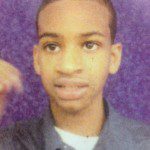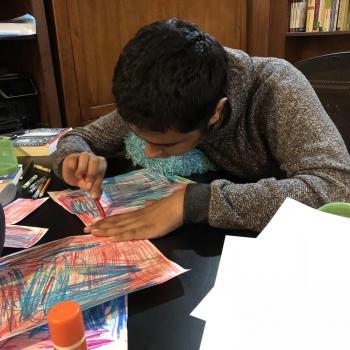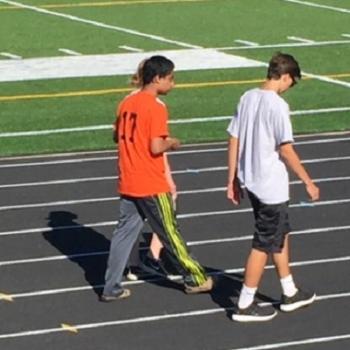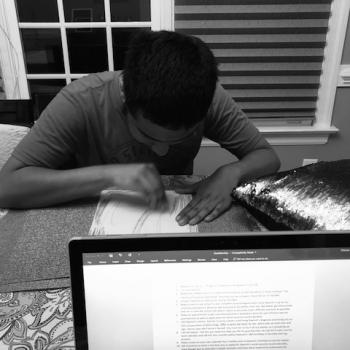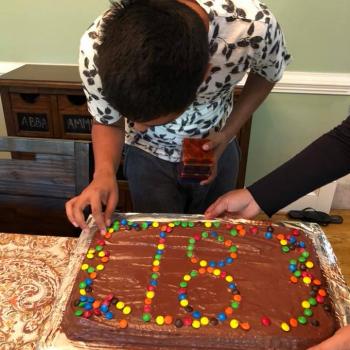My friend Kitti South Robinson along with Melissa Diamond are in Jenin, in the West Bank of the Palestinian territory for the next few months working on “The Jenin Autism Project,” part of “A Global Voice for Autism.” They are there to help parents learn about autism and Applied Behavior Analysis and help connect them to other autism resources as well as building their own supportive network. They are blogging their experiences here to share their efforts in figuring out how to best help children with autism in a part of the world where so little help is available. See the end of this post for links to prior posts on “The Jenin Autism Project.”
Editor’s Note: This post from Melissa really struck home for me, as a mom who has been helping her child manage his autism for 11 years. There was such a learning curve in the beginning to figure out what autism was, what therapies to try, how to document everything, which doctors to see, where to be tough, where to be pliable, when to bend, and when to stand tough. I literally had to relearn my son and also myself — learn to trust my own instincts when it came to Lil D’s education and life-learning. A recent post I wrote about the “function of his behavior” is just a small example of how much we have evolved in our understanding of Lil D, why he does certain things, what his behaviors mean, and how to best help him. The post also touches upon the sibling support group the Jenin Autism Project is starting — something that has been so helpful for Lil D’s sister here at home.
To read the following post was a real eye-opener about how lucky we are to live in the United States with all the opportunities and education and medical help and community support available to Lil D, his siblings and our family. These families in Jenin in the Palestinian territory are experiencing some real eye-opening learning now through the Jenin Autism Project, and I pray it helps their children, strengthens their faith, and helps them find their footing in Autism Land.
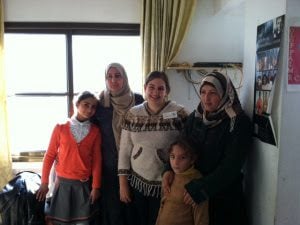
By Melissa Diamond
At the end of a recent training, the mothers told us that this was the most useful out of any they have had thus far. The Functions of Behavior program, they said, allowed them to gain insight into their children’s communication styles in a way they had not previously considered. After defining terms that are fundamental to the training, we had each mother select one of their child’s behaviors and use it to go through the Functional Analysis Screening Tool (FAST) in order to determine the function of that behavior. Doing this then allows us to develop ABA programs that can replace or mitigate those behaviors.
From a Parent’s Point of View
“Today I learned about reasons for my child’s behavior and actions through the FAST assessment. I looked at my child’s shouting behavior to figure out why he behaves the way he does. Learning how to work with him will benefit him and will also benefit me in my home.”
-Hanaa*, mother of Abed(5)
Sibling Support
While the mothers focused on learning skills for their homes and for the cooperative, Katrina and I led the sibling support program downstairs. The siblings who came today ranged from age six to nine, and they were all well-behaved and happy to participate. The goal of today’s support group was to get the children comfortable with one another and prepared to talk about their siblings in the future. All of the children in the group go to different schools, and none know each other previously. So we started by decorating name tags and playing some introductory games.
Once everyone was comfortable speaking in the group, we had the participants come up with five rules that they would like to uphold during sibling support sessions. Since this group is meant to be a comfortable place for the siblings above all else, we allowed them to come up with the rules independently.
Then, in our main sibling support activity for the day, we had participants write stories about their brother or sister with autism. I introduced the activity to them by reading them a story about Gina and showing them pictures. All of the siblings crowded around the iPad to go through the pictures. They were interested to hear about activities they could do with their siblings and ways they could engage them. Each child in the program wrote their own story, usually 4-5 sentences long. They sat quietly and listened to each other share.
After this, the children played group games until it was time to meet up with their mothers. At the end of the day we brought the mothers and siblings together and gave them a prompt to discuss before next Saturday’s session. Since siblings of children with autism often get less alone time with their parents than other children, we are giving the mothers and siblings weekly activities to do at home to ensure that the siblings get the attention they need. For next week, we are asking parents and siblings to discuss five things that are special about their child/make their child unique (parent to sibling), and five things that the child values in his/her parent, needs his/her parent’s support for (sibling to parent).
From a Sibling’s Point of View
“I liked everything about the program today. I learned how it is okay to feel about my brother with autism. There is nothing that I would change for next week.”
-Haya*(9) Sibling of Abed(5)
* Names have been changed for privacy.
Melissa and Kitti will take turns blogging about their experiences, which will be posted here and on their own blog. For more information, please check their blog and the website for A Global Voice for Autism.

